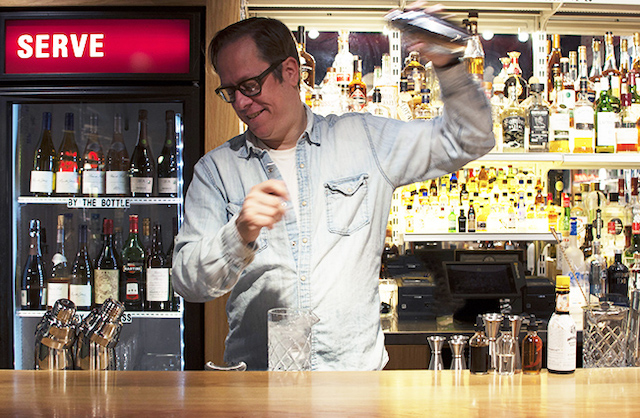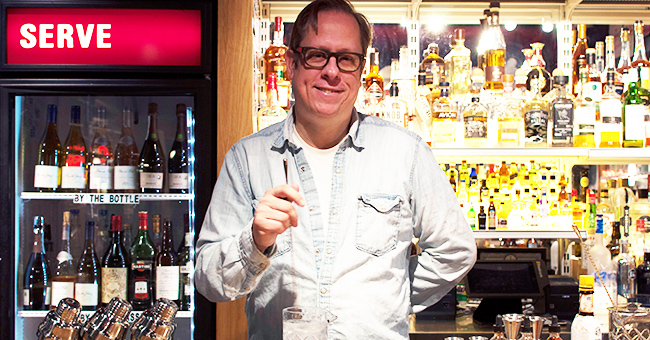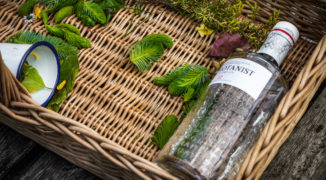GENUINE Liquorette bartender Eben Freeman congratulates his students with applause and a drink after the stirring portion of his Master Class, a bi-monthly workshop he hosts at the Manhattan bar that covers everything from jiggering skills to education on various cocktail families. Why? “Stirring techniques are definitely the most challenging for people,” he says. “It has the least margin for error, and it involves the fingers and the hands, and people store a lot of tension in their hands.” As such, he resorts to a few warm-up tricks for the group to practice, including creating a Spock symbol (à la “Star Trek”) with their fingers. “It’s a mental thing, just like rubbing your stomach and patting your head,” he notes.
Getting that coordination down from the start comes in handy for the other stirring techniques out there, which Freeman helps outline for us here.
Stirring 101
Before delving into anything too fancy, Freeman emphasizes the importance of mastering the basics of the Japanese-style stirring technique that he trains in, which calls for a more economical bar spoon proxy: a chopstick.
“It’s a good tool for people at home,” he says of the sushi service ware, which is meant to be pressed against the sides of the mixing glass in a circular motion the entire time, just as a bar spoon would be. Much more important than the looks of your stirring tool, though, are the sounds coming from the glass. “The main point is to stir rapidly and silently so that the ice isn’t jumping around in the glass and putting air into the drink, which can emit volatile flavors in the cocktail,” he says. Economy of motion is also key: “The big thing people look for is not a lot of motion in your arms — it should be mostly in your fingers and a small amount in your wrists.”
Double stirring
What’s better than one cocktail? You could argue two — although Freeman wouldn’t be the one making that claim. “I personally like all of the attention to be on a single glass, but because of the needs of speed of certain venues, bartenders have to be able to stir two drinks at once, or else people will be waiting a long time for their drinks,” he says. That said, it’s all about breaking the habit of relying entirely on your dominant hand for the drinks creation and training your non-dominant hand to follow suite. “There’s no universal way to tackle this, but I find it helpful to keep my dominant hand behind my back when I’m stirring or shaking with my left hand,” says Freeman. “It helps me to focus on my non-dominant hand a bit better.”
As for which drink takes precedent post-stir, consider how it’s being served. “Ideally you want to put your strainer on those two glasses and strain them at the same time, but if you’re not able to do it that way, your next thought should be ‘which one is being served on ice?’ and have that be the first one you pour,” notes Freeman.
 Although Eben Freeman prefers to focus on stirring one drink at a time, he advises bar students on the proper way to stir and shake two cocktails at once.
Although Eben Freeman prefers to focus on stirring one drink at a time, he advises bar students on the proper way to stir and shake two cocktails at once.
Shaking while stirring
The whole “patting head, rubbing stomach” challenge applies big-time to the bar world with this technique, which requires serious dexterity. Because stirring necessitates more focus, Freeman finds himself using his dominant hand for that motion and his left hand for shaking. He then releases the spoon in the mixing glass and uses both hands to give the shaker a few good, hard shakes before straining out that drink first. “Stirring and shaking should equally chill the drink that you’re preparing,” he says. He generally suggests 20 seconds of chill time, but he also notes several factors that play into that period. “It really does depend on the ice, whether you chill your mixing glass, and how fast you’re stirring,” he says. The best way to police yourself? Ensure you’re employing your jigger properly and that you’re hitting your wash line. “If you really want to replicate results each time, ask yourself if the drink is cold, if it has the same wash line each time, and if your jiggering skills were on point — if so, you should have an innate sense of how long it takes to chill.”
Quadruple stirring
This technique calls for all hands on deck — and then some. “For this, you’re holding two spoons in your right hand and two spoons in your left hand, and you’re stirring four different mixing glasses at the same time,” says Freeman, who notes the importance of remembering that idea of quick stirring and quiet ice. “It’s not the ideal method, but it can certainly get the job done when you’re buried in thickets.”





